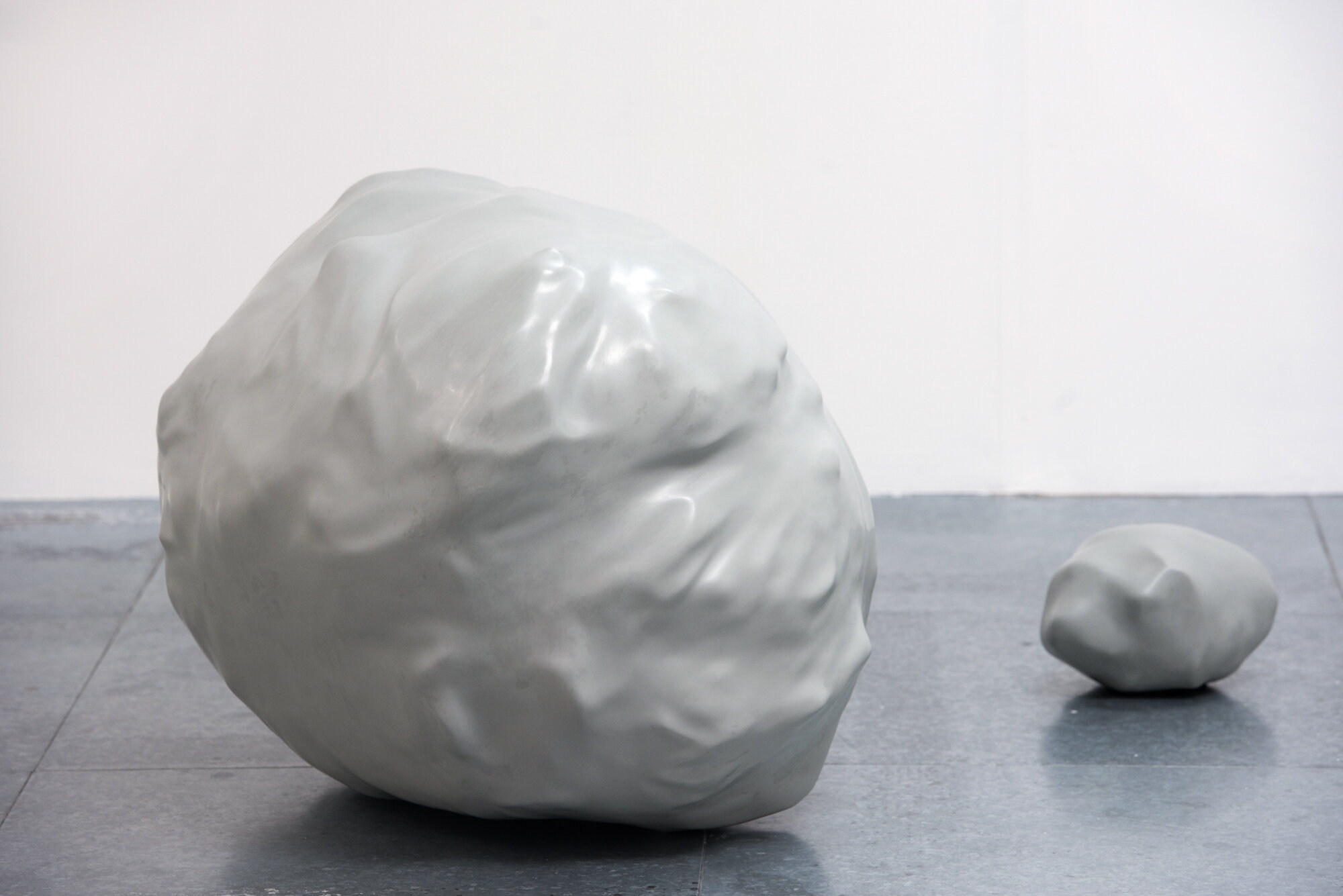Yesterday / Today / Tomorrow
Matthew Smith
3 October – 2 November 2019
Untitled (Every rock from National Geographic magazine, November 2014), 2015, collage on paper, 32x32cm
For his third solo exhibition at Vane Matthew Smith has made a series of rock-like fibreglass sculptures in varying monochrome shades. The sculptures are made from non-recyclable plastic taken from the artist’s household waste.
This was collected over one calendar year and divided up to make ten sculptures each titled with the dates between which the entombed material was amassed. The plastic detritus was arranged and formed, then coated in resin and glass fibre. They have a smooth semi-reflective surface through which recognisable everyday forms of plastic packaging appear to protrude. Usually destined for landfill, Smith transforms this discarded material into a series of sculptures, presenting us with a landscape of rogue geological objects from the Anthropocene epoch.
On the walls around these sculptures are presented a series of twelve collage works. Each takes all the images of rocks from a single copy of National Geographic magazine, arranging them into a simple pile as if they were awaiting another use. The rocks are cut out from the foreground of seductive visual images of the natural world and treated as physical material. Through the extemporaneous activity of adding them to the stack, a sculptural structure is created, producing an odd heap of mismatched geology, an improbable mound of visual material. The resulting images are reminiscent of cairns: piles of stones which are used to mark a route through a landscape. They appear to help the viewer to navigate a way through the other artworks.
Matthew Smith, ‘Yesterday/Today/Tomorrow’, 2019, installation view. Photo: Colin Davison
Matthew Smith, ‘Yesterday/Today/Tomorrow’, 2019, installation view. Photo: Colin Davison
Matthew Smith, ‘Yesterday/Today/Tomorrow’, 2019, installation view. Photo: Colin Davison
Matthew Smith, ‘Yesterday/Today/Tomorrow’, 2019, installation view. Photo: Colin Davison
In another part of the gallery we are confronted with a space strewn with small fragments of black plastic. These were collected by the artist from his immediate environment, found washed up by the tide or simply picked up from the street. These plastic fragments form a landscape that the viewer walks on and around, offering a concentrated, artificial environment, one intense field of coloured material akin to a rock scree or a drift of sand. By amassing all this material together in one place Smith scales up the single unremarkable action of discarding some small disposable plastic item to a monstrous and disturbing level, creating an environment in which to examine such choices.
Amid this plastic terrain is set another much larger sculpture, as if excavated from the black plastic environment it sits within. Serpentine in form, it is made from the same manmade plastic refuse as the first series of sculptures. This strange bright white object creates a jarring visual contrast with the black plastic strewn on the gallery floor. The sculpture is made from plastic waste and rendered in resin, while the form it takes appears to have developed naturally or to have once been alive. Repeated basic forms multiply – one attached to the next – developing organically like crystals or the division of cells. It seems to be a product of some strange process as yet undiscovered: a disturbing amalgam of the natural and the artificial.
Take a video tour of the exhibition
Share this page












